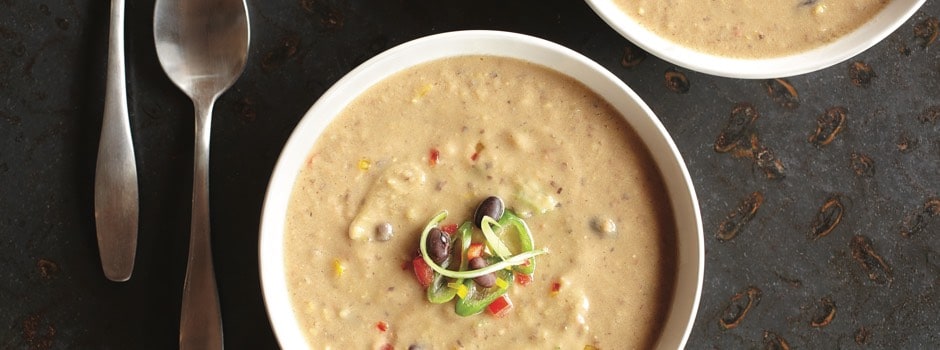To get the best results, it’s important to use the right tool for the job. It can be tricky deciding between hand (or stick) blenders and traditional blenders, so we talked to one of our Vitamix® corporate chefs about four questions we should ask before we start blending.
- Party of one?
Are you cooking for one, or making large batches? If you’re making a single smoothie or a small serving of sauce, baby food, or purée, then a stick blender is a convenient option. If you usually prepare larger quantities of food (anything over a double serving), a traditional blender will probably save you time. A personal blender could give you the best of both.
- What’s on the menu?
If versatility is the name of the game, you can’t beat a traditional blender. High-performance machines can effortlessly blend tough ingredients like frozen fruit and hearty greens, grind nuts into homemade nut butter, make frozen desserts, hot soup, and more.
- How important is texture?
If you like your smoothies silky-smooth, a hand blender might not be able to deliver the texture you’re looking for. Stick blenders traditionally don’t allow you to control speed, so they can’t create a range of textures. Hand blenders also rely on you to do more of the work. If you miss an area of a sauce, smoothie, or puree, you’ll be left with unblended product in the pot.
- Room for more?
With specialty appliances for every niche, kitchen space is at a premium now more than ever. Storage and ease-of-use can play a role in determining whether you should own a hand blender (ideal for smaller spaces), a traditional blender, or both.
Both blender types are valuable tools to have in your kitchen. For some, one blender might be enough, while others may prefer to have both on hand and use them for different reasons. Consider how you cook, and what you want your blender to do, before you make a decision about which one might be right for you.
Related Articles

Top 3 Things to Look for in Blender Reviews
How to find blender reviews with the most useful information.



